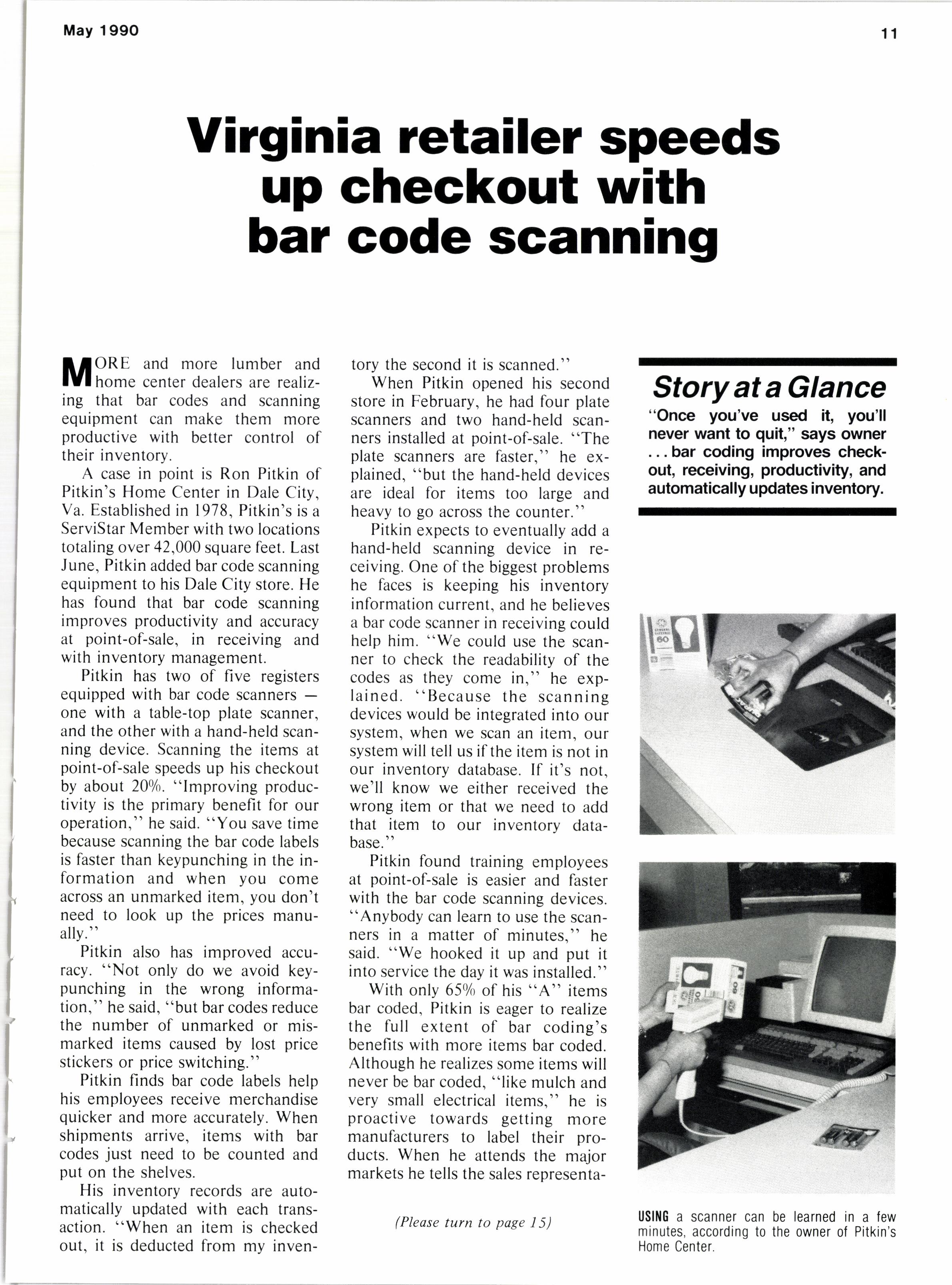
2 minute read
Virginia retailer speeds up checkout with bar code scanning
IIORE and more lumber and IUI home center dealers are realizing that bar codes and scanning equipment can make them more productive with better control of their inventory.
A case in point is Ron Pitkin of Pitkin's Home Center in Dale City, Va. Established in 1978, Pitkin's is a ServiStar Member with two locations totaling over 42,000 square feet. Last June, Pitkin added bar code scanning equipment to his Dale City store. He has found that bar code scanning improves productivity and accuracy at point-of-sale, in receiving and with inventory management.
Pitkin has two of five registers equipped with bar code scannersone with a table-top plate scanner, and the other with a hand-held scanning device. Scanning the items at point-of-sale speeds up his checkout by about 200/0. "lmproving productivity is the primary benefit for our operation," he said. "You save time because scanning the bar code labels is faster than keypunching in the information and when you come across an unmarked item, you don't need to look up the prices manually."
Pitkin also has improved accuracy. "Not only do we avoid keypunching in the wrong information," he said, "but bar codes reduce the number of unmarked or mismarked items caused by lost price stickers or price switching."
Pitkin finds bar code labels help his employees receive merchandise quicker and more accurately. When shipments arrive, items with bar codes just need to be counted and put on the shelves.
His inventory records are automatically updated with each transaction. "When an item is checked out, it is deducted lrom my inven- tory the second it is scanned."
When Pitkin opened his second store in February, he had four plate scanners and two hand-held scanners installed at point-of-sale. "The plate scanners are faster," he explained, "but the hand-held devices are ideal for items too large and heavy to go across the counter."
Pitkin expects to eventually add a hand-held scanning device in receiving. One of the biggest problems he faces is keeping his inventory information current. and he believes a bar code scanner in receiving could help him. "We could use the scanner to check the readability of the codes as they come in," he explained. "Because the scanning devices would be integrated into our system, when we scan an item, our system willtellus if the item is not in our inventory database. If it's not, we'll know we either received the wrong item or that we need to add that item to our inventory database."
Pitkin found training employees at point-of-sale is easier and faster with the bar code scanning devices. "Anybody can learn to use the scanners in a matter of minutes," he said. "We hooked it up and put it into service the day it was installed."
With only 650/o of his "A" items bar coded, Pitkin is eager to realize the full extent of bar coding's benefits with more items bar coded. Although he realizes some items will never be bar coded, "like mulch and very small electrical items," he is proactive towards getting more manufacturers to label their products. When he attends the major markets he tells the sales representa-
(Please turn to page 1 5)










